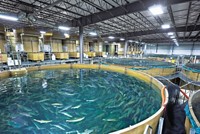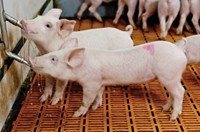Advertisement
Grab your lab coat. Let's get started
Welcome!
Welcome!
Create an account below to get 6 C&EN articles per month, receive newsletters and more - all free.
It seems this is your first time logging in online. Please enter the following information to continue.
As an ACS member you automatically get access to this site. All we need is few more details to create your reading experience.
Not you? Sign in with a different account.
Not you? Sign in with a different account.
ERROR 1
ERROR 1
ERROR 2
ERROR 2
ERROR 2
ERROR 2
ERROR 2
Password and Confirm password must match.
If you have an ACS member number, please enter it here so we can link this account to your membership. (optional)
ERROR 2
ACS values your privacy. By submitting your information, you are gaining access to C&EN and subscribing to our weekly newsletter. We use the information you provide to make your reading experience better, and we will never sell your data to third party members.
Environment
None Too Bright
by Rudy M. Baum
June 6, 2011
| A version of this story appeared in
Volume 89, Issue 23
Human beings are both amazingly clever and staggeringly stupid.
No other conclusion is possible given two stories on opposite pages of the May 26 Washington Post. The story on page 2 of that day’s paper carried the headline: “Groups sue FDA to try to limit antibiotics in animal feed.” The story on page 3 had the headline: “New NASA mission will ‘kiss’ asteroid in 2020.”
Let’s do clever first. On May 25, NASA announced that it would launch a spacecraft to an asteroid in 2016 and use a robotic arm to obtain samples from the asteroid and return them to Earth in 2023. The mission is called OSIRIS-REx.
According to NASA’s website, OSIRIS-REx will travel through space for four years and approach the “primitive, near Earth asteroid designated 1999 RQ36 in 2020. Once within three miles of the asteroid, the spacecraft will begin six months of comprehensive surface mapping. The [mission] science team then will pick a location from where the spacecraft’s arm will take a sample. The spacecraft gradually will move closer to the site, and the arm will extend to collect more than two ounces of material for return to Earth in 2023. The mission, excluding the launch vehicle, is expected to cost approximately $800 million.”
That pricey space dust will be stored in a capsule that will land at Utah’s Test & Training Range in 2023. The asteroid 1999 RQ36 is interesting for a couple of reasons, according to NASA. Asteroids are relics of the solar nebula from which the sun and planets formed. Their composition can tell us something about our origins. There’s also a one in 1,800 chance that 1999 RQ36 will clobber Earth in 2182. OSIRIS-REx probably can’t do anything about that.
But think of it: Humans can build a machine and launch it into space, guide it hundreds of millions of miles to rendezvous with a speck of an object, grab a little piece of that object, and return it to a precise location on Earth seven years later. That really takes brains.
It also takes brains to invent a whole range of molecular entities that we can ingest to kill many pathological bacteria without doing any damage to ourselves. They’re called antibiotics and, over the past 80 years, they’ve changed human existence.
Of course, the brilliant creatures who can build OSIRIS-REx and invent antibiotics would never do anything so stupid as to jeopardize the efficacy of those almost magical chemicals, would they?
Of course they would, if there were enough money to be made doing it. Between 70 and 80% of all the antibiotics used in the U.S. are given to healthy farm animals to promote faster growth and keep them healthy. Not to treat disease, mind you—to allow them to use food more efficiently and to prevent disease in the factory farms where most farm animals are raised in the U.S. today.
This, of course, is a prescription for promoting the development of antibiotic resistance. It’s exactly why you don’t dispense antibiotics willy-nilly. It’s exactly why your doctor tells you to take every last one of the prescribed antibiotics even if you feel “all better” days before the bottle is empty.
Use of antibiotics useful to humans to promote farm animal growth was banned in the European Union in 1998; the use of all antibiotics for such purposes was banned in the EU in 2006. FDA, in its inimitable fashion, has tiptoed around the issue, issuing a draft guidance last year urging “judicious use” of antibiotics in farm animals. Antibiotic manufacturers and U.S. farmers maintain that there’s not enough evidence to warrant a ban.
Look, this is a no-brainer. Antibiotic resistance among bacteria that threaten humans is rampant. There are a lot of reasons for that, all of them dumb. Using antibiotics to grow fatter hogs, cattle, and chickens is about the dumbest. There’s a bill in Congress (H.R. 965) introduced by Rep. Louise Slaughter (D-N.Y.) that would ban nontherapeutic use of medically important antibiotics in farm animals. It ought to pass.
Thanks for reading.




Join the conversation
Contact the reporter
Submit a Letter to the Editor for publication
Engage with us on Twitter